UP Elections: Preservation of Ayodhya’s Secular Culture Takes Backseat
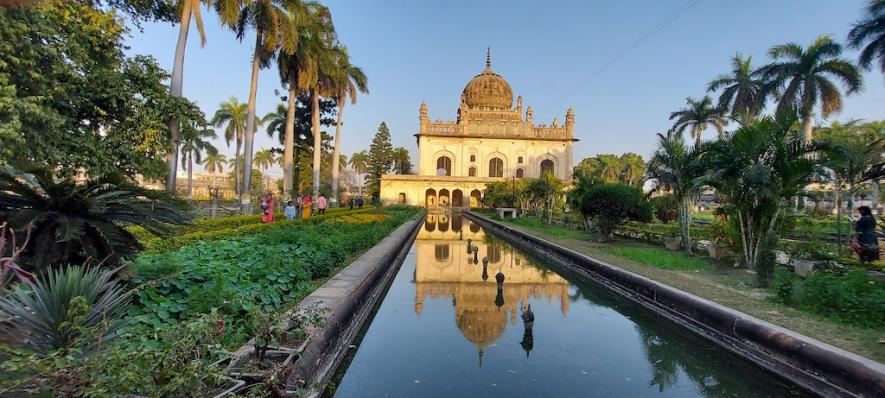
The tomb of Shuja-ud-Daula
Ayodhya: Leaders of different political parties might have projected Ayodhya as a symbol of communal politics, but this small town in Uttar Pradesh (UP) has been known to be the epicentre of India’s composite culture for centuries. Notwithstanding the high-decibel debate on Babri Masjid and Ram Janambhoomi, the people of this town continue to revere their hermits and saints.
The city is dotted with graves, mausoleums and monuments epitomising the country’s Ganga-Jamuni Tehzeeb, or the fusion of Hindu and Muslim cultures. The shrines of the prophets of Islam and Sufi saints are not easily noticeable until local old-timers—both Hindus and Muslims—point them out in the middle of town and on its outskirts.
A local Hindu guides Newsclick to all the religious and historical sites the town preserves and boasts of to give out the message to the world that Ayodhya, beyond the Ram temple and the Babri mosque, is a centre of faith of the communities.
The historical sites narrate the story of how Shuja-ud-Daulah, the Nawab of Awadh, once ruled this capital of the erstwhile estate, which was shifted to Lucknow, and how the legends were allowed to be buried under the debris.
Ayodhya will vote on February 27 in the fifth phase of the seven-phased Assembly elections. Ironically, the issue of preservation of its rich cultural heritage is neither mentioned in the political discourse here nor do voters think it matters in the elections.
SHRINES OF SUFI SAINTS
The Syed Ibrahim Shah Dargah at Hargara, the largest shrine in Ayodhya, is frequented by people of both faiths. According to locals, there were, at least, 80 Sufi shrines in the town, which is considered the third most important Hindu pilgrimage site after Mathura and Varanasi. Some were destroyed during the riots post the demolition of the Babri mosque—but several of them still remain though without proper maintenance.
Muslims are less than a tenth of the town’s population and a sizeable number of visitors to the Sufi shrines are Hindus. One of the first spiritual leaders who chose Ayodhya as the centre for his teachings as early as the 12th century was Qazi Qidwatuddin Awadhi, who migrated to the town from Central Asia along with his disciple.
The legendary Sheikh Jamal ‘Gujjari’, who belonged to the Firdausia Sufi order, was another Muslim saint of the pre-Mughal times, is highly revered. According to locals, he carried a large pot of rice on his head to distribute it among the poor and destitute.
Khwaja Nizamuddin Auliya, the 14th century Sufi saint of Delhi, had a number of spiritual successors in Ayodhya. Sufi Sheikh Nasiruddin Chiragh-e Dilli, who is said to be buried in the capital, was one of them. He left the town in his 40s to stay with Auliya. The town also houses the graves of his disciples.
STORY OF BADI BUA
One of the few popular shrines of female Sufi saints in Ayodhya is the dargah of Badi Bua, or Badi Bibi, the sister of Sheikh Nasiruddin Chiragh-e Dilli. An orphanage constructed near Bibi’s grave in her memory houses orphans and provides them free education.
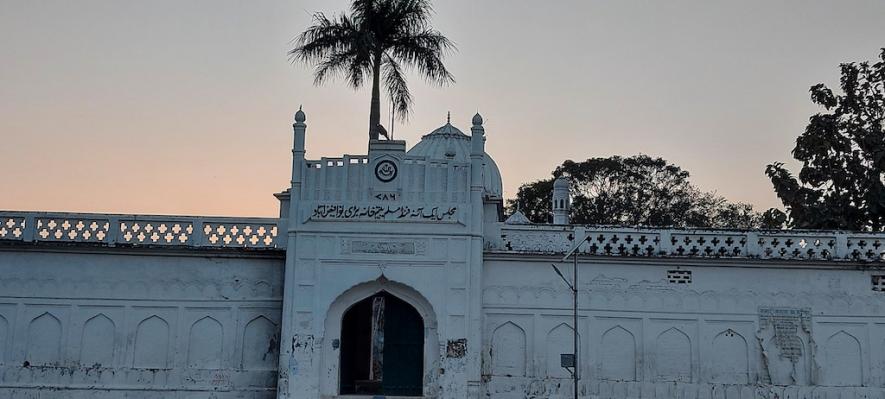
Badi Bua orphanage
Despite getting several marriage proposals because of her beauty, she dedicated herself to serving the poor. Local clerics, according to people, troubled Bibi a lot because of her refusal to marry.
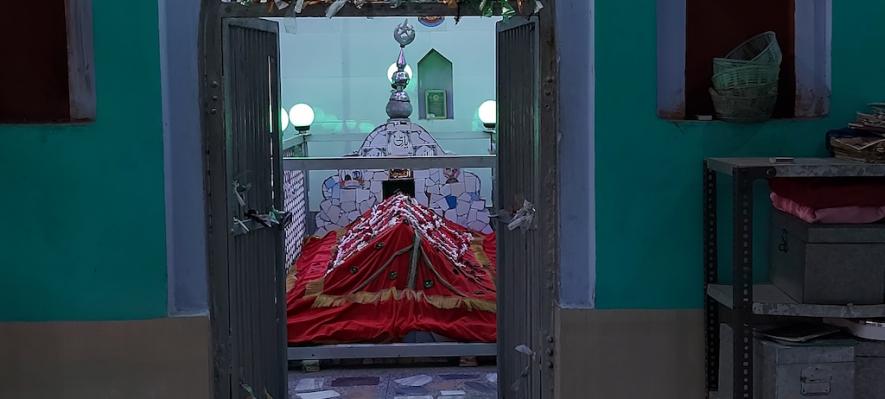
The mausoleum of Badi Bua
The kotwal, who was attracted to Bibi, sent her a marriage proposal via a messenger. When she refused to speak with the messenger and insisted on meeting the kotwal directly, he landed up at her house. When she asked him why he wanted to marry her, the kotwal said that he was in love with her eyes. Legend has it that she plucked her eyes out and gave them to the shocked kotwal. Realizing that Bibi was no ordinary woman but a true devotee of God, he fell at her feet and begged for mercy.
Ayodhya is also home to the shrines of Hazrat Noah and Hazrat Sheesh, the two prophets of Islam. The former saved life on the earth from the enormous flood and the latter was the son of Hazrat Adam, the first man on earth and was the first child to be born who lived for about 1,000 years.
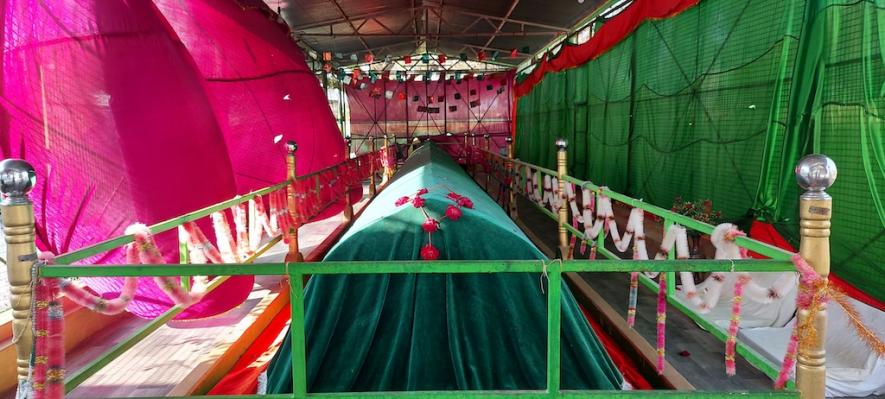
Grave of Hazrat Noah
The grave of Hazrat Noah, situated behind the Ayodhya Police Station, is very popular with newlyweds, especially Hindus, coming to seek his blessings for a happy married life. Both Muslim and Hindu devotees perform rituals at his grave every Thursday.
Unfortunately, the town lacks historians and any research to suggest how they arrived in India and were buried here.
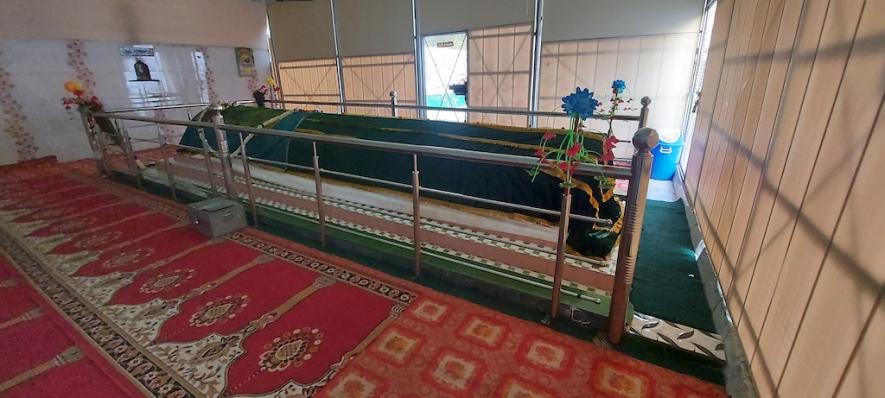
Shrine of Hazrat Sheesh
The caretaker of Hazrat Noah’s grave, famously known as Navgazi, said that people of different faiths visit the shrine for spiritual treatment when their “loved ones are overpowered by evil spirits”. Rioters tried to attack the grave in 1990 and 1992 but had to return from its entrance despite the surrounding area up in flames, he said. The then-chief minister Mulayam Singh Yadav, according to him, had once promised that his government would develop the area to attract devotees from across the world. “But he bowed down before the threat issued by right-wing forces,” he alleged.
KHURD MECCA
According to a popular legend, Ayodhya has a place called Khurd Mecca (mini Mecca). One Muslim ruler wanted to build a replica of Holy Ka’bah but couldn’t complete the construction due to some unknown reasons.
When Newsclick asked the locals to guide it to the “unfinished structure”, they said it is impossible to reach there due to the lack of a road. Upon much coaxing, the locals agreed to accompany Newsclick to the place, which is inside a dense forest. There was no such structure except a few broken graves that must be centuries old.
Old-timers said that Ayodhya’s association with Islam and Muslims dates to a period much before the construction of the Babri Masjid in the 16th century. Ayodhya is a blessed town and Muslims consider it a Khurd Mecca, they said adding that it has a pluralistic character.
HERITAGE OF SHUJA-UD-DAULAH
Located on the banks of Ghaghara river, Ayodhya, formerly Faizabad, is also associated with the Nawabs of Avadh. Shuja-ud-Daula, who was the Nawab from 1754 to 1775, had built Dilkusha after being defeated by the British in the Battle of Buxar.
The palace, which signifies that he continued to control the region even after his defeat, was his residence till his death. Built in the Mughal style of architecture on 4.5 acres, its walls were made using Lakhori bricks and clay. Most parts of the structure are in ruins. The palace is now known as Afeem Kothi after the Narcotics Control Bureau started using a portion of it to issue drug licences for the manufacturing of medicines.
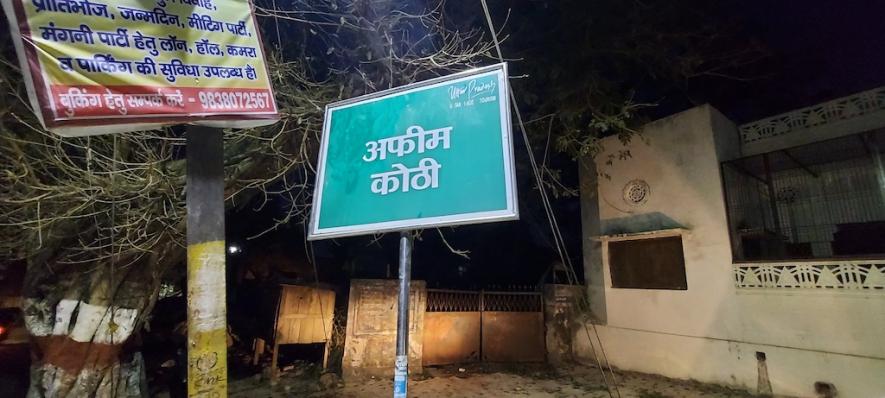
Dilkusha, now Afeem Kothi, the residence of Shuja-ud-Daula
The only heritage preserved by the Archaeological Survey of India (ASI) is Gulab Bari (the garden of roses), known for a wide variety of flowers and a famous tourist destination. It also houses a magnificent tomb of Shuja-ud-Daula.
Gulab Bari was used to host significant religious functions during the Nawab’s reign. Built in the Islamic style of architecture, the imposing tomb is one of the best-designed monuments in UP.
A large pillar with the National Emblem is situated at the entrance. A well-maintained walkway lined with swaying coconut trees on either side leads to an ancient arched gateway. The garden also houses a beautiful mosque and a small watchtower that stands right next to it. Walking through the arched passages of the tomb makes for a fascinating experience.
The opulent Moti Mahal, which was the home of Shuja-ud-Daula’s wife Bahu Begum, is also worth a visit. Surrounded by a well-manicured garden, the palace stands as a fine specimen of Mughal architecture and speaks volumes about the princely past of Ayodhya. Her tomb rests at Jawahar Bagh and is considered to be one of the best buildings in Awadh. At the time, its construction cost about Rs 3 lakh.
TRACES OF BUDDHISM
The Buddhists also claim Ayodhya to be their holy town. Earlier known as Kosala or Saket, as per the Buddhist tradition, Ayodhya used to be one of the major towns during the reign of Lord Buddha’s father Suddhodhana.
Chinese traveller Fa-Hien was said to have visited Ayodhya in the fifth century and found a tooth stick of Lord Buddha in the town that grew to a length of seven cubits. Another Chinese Buddhist traveller Hiuen Tsang visited Ayodhya two centuries later and noted some 3,000 Buddhist monks with only a small number of town’s other inhabitants adhering to other faiths. At that time, it is said, Ayodhya had around 100 Buddhist monasteries and 10 big Buddhist temples.
AWADH’S SYNCRETIC CULTURE OVERSHADOWED?
The Ram Janambhoomi-Babri dispute has “completely overshadowed the syncretic culture of Awadh”, said Valay Singh, who has authored Ayodhya: City of Faith, City of Discord, adding that “it is our duty to remember and celebrate this co-existence for future generations”.
“There are contradictions. But if we want to become a progressive society, we need to emphasise the shared heritage. It is baffling that we didn’t think about promoting sites like Ayodhya and Faizabad that symbolise the Ganga-Jamuni culture. The possible reasons could be apathy towards preservation of heritage and reluctance to develop such shared heritage sites because of short-term political gains—this was especially true post-1980s,” Singh said.
The idea of a Hindu nation has pervaded historiography and conservation, Singh added. “However, as a democratic and secular country, we must realise that the way forward is to highlight what is shared and what is universal. The ASI must depoliticise itself and preserve and promote our heritage and not just what suits the government.” After all even the Supreme Court judgement concluded that there’s no evidence that Ram’s birthplace was destroyed to build the Babri mosque, Singh said.
Newsclick contacted ASI officials for their comments on the forgotten historical sites of Ayodhya but none of them was willing to comment.
Get the latest reports & analysis with people's perspective on Protests, movements & deep analytical videos, discussions of the current affairs in your Telegram app. Subscribe to NewsClick's Telegram channel & get Real-Time updates on stories, as they get published on our website.
























